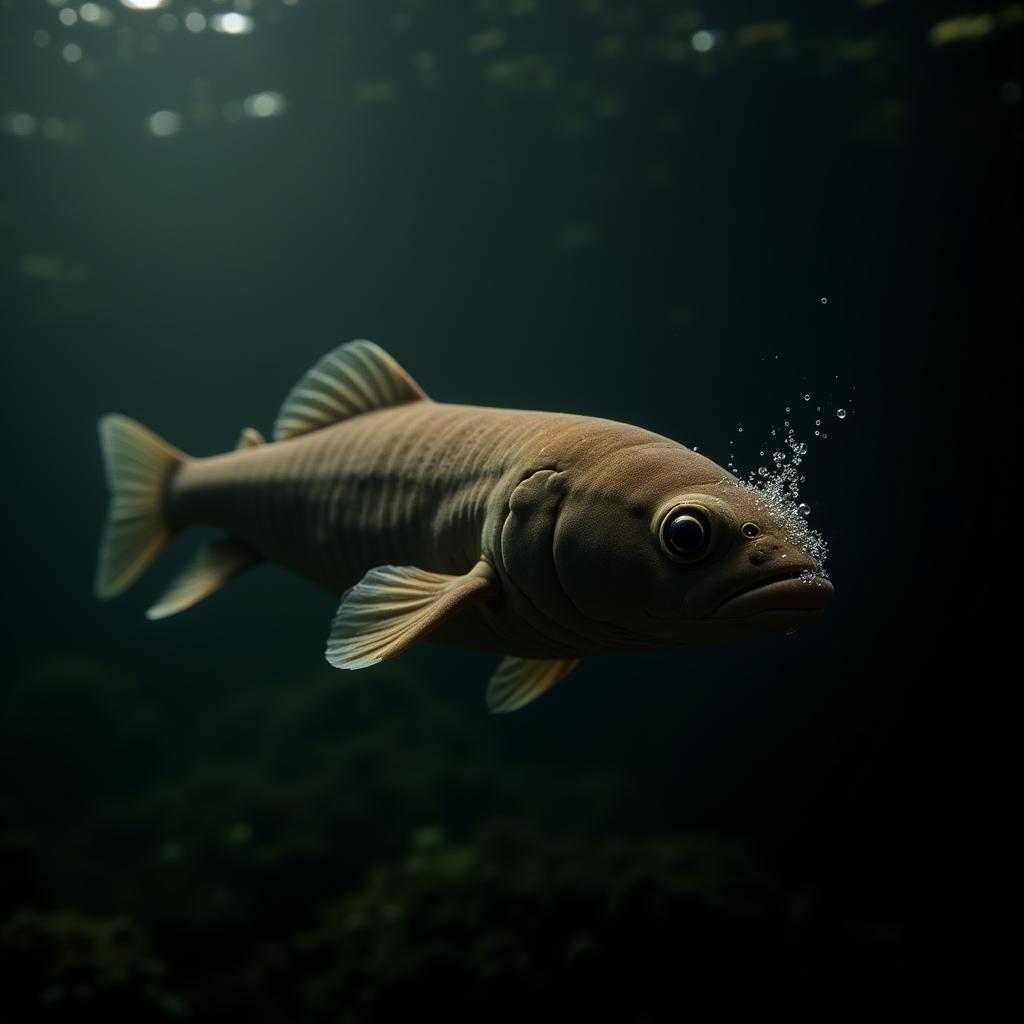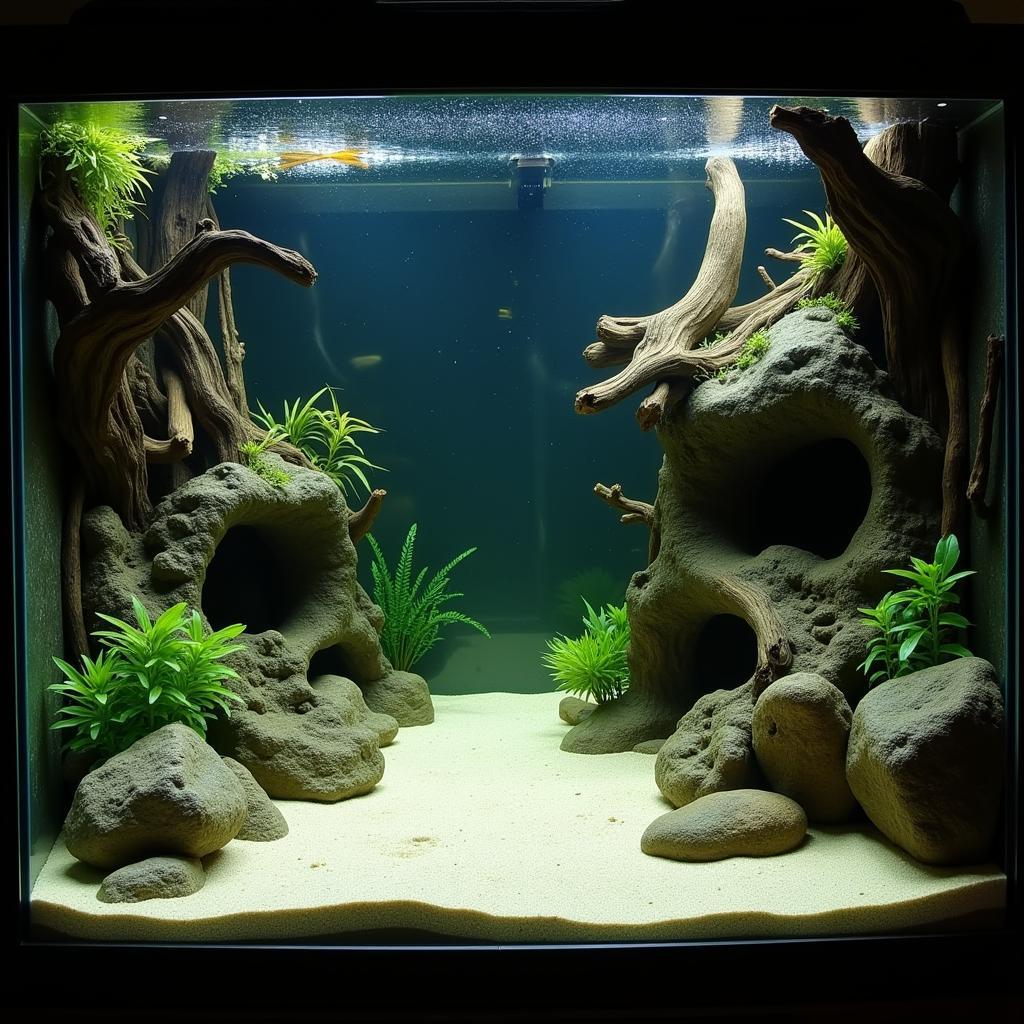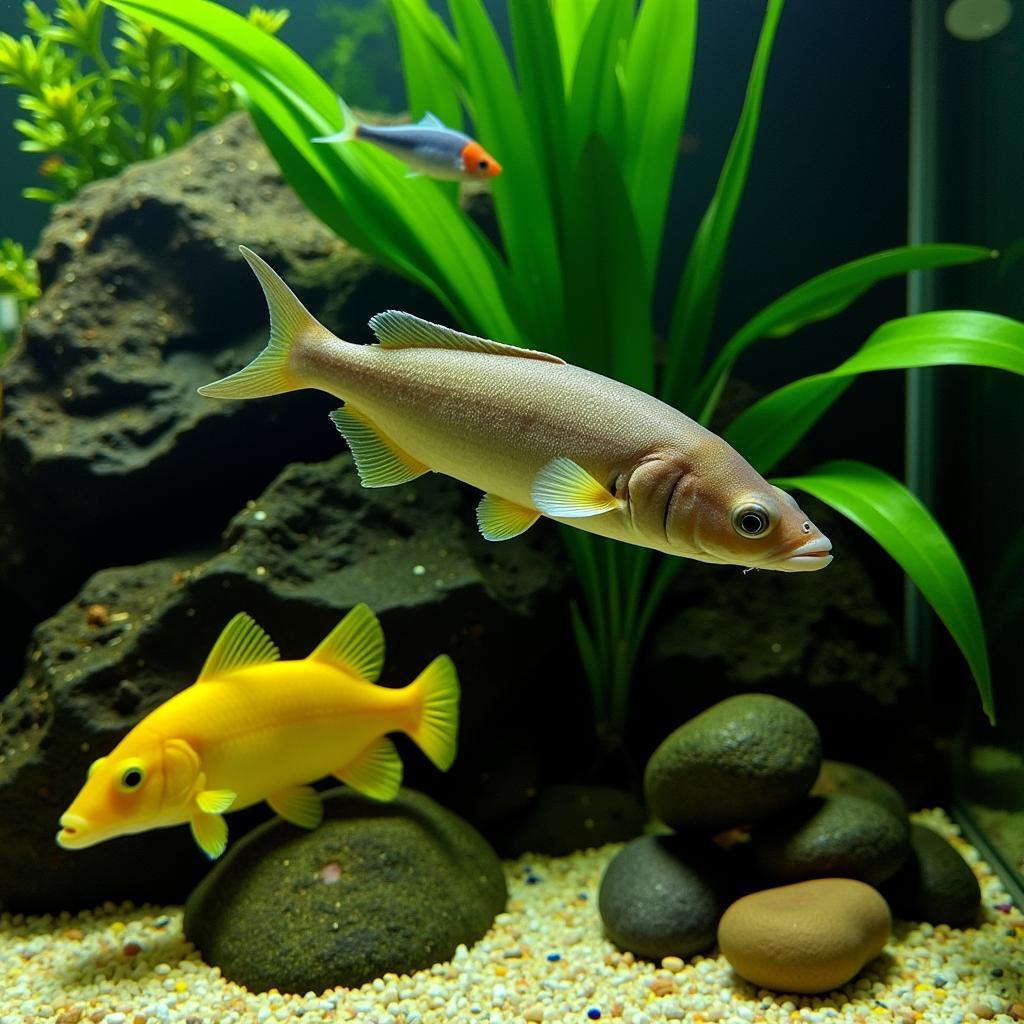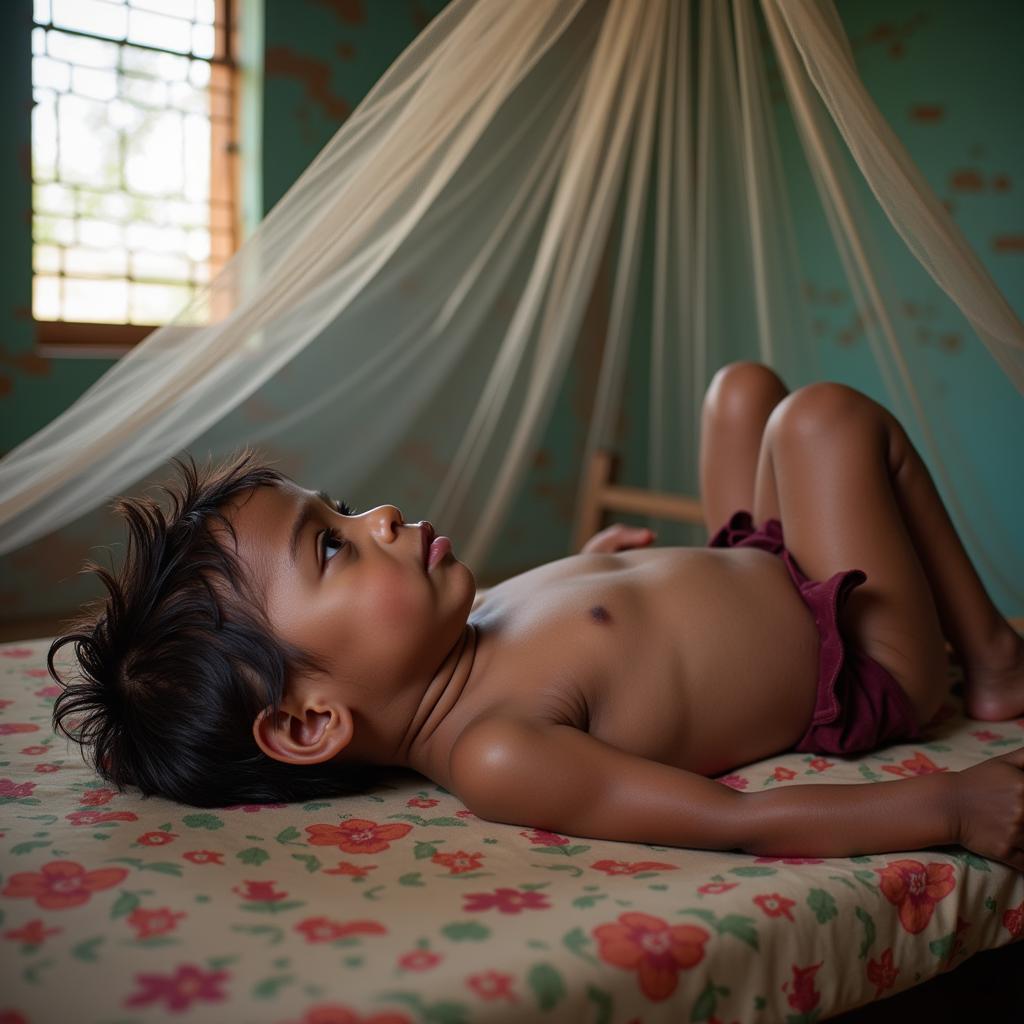African Brown Knifefish Care: A Complete Guide
The African brown knifefish (Xenomystus nigri) is a unique and fascinating freshwater fish that can make a rewarding addition to the right aquarium. Native to the slow-moving, murky waters of West and Central Africa, these nocturnal predators have captivated aquarists with their sleek, torpedo-like bodies and intriguing hunting behavior. This comprehensive guide will delve into the specifics of African Brown Knifefish Care, equipping you with the knowledge to provide a thriving environment for these captivating creatures.
Understanding the African Brown Knifefish
Before we dive into the specifics of care, let’s get acquainted with the African brown knifefish. Unlike most fish that rely on sight to navigate and hunt, these nocturnal marvels possess a unique sensory organ called a “knifefish” due to its long, compressed body shape, which resembles a knife. This organ allows them to detect the electrical fields generated by other organisms, enabling them to navigate murky waters and locate prey with remarkable precision, even in complete darkness.
 African Brown Knifefish Hunting in the Wild
African Brown Knifefish Hunting in the Wild
Setting up the Ideal Aquarium
Creating a comfortable and stimulating habitat is crucial for the well-being of your African brown knifefish. Here’s a breakdown of the key factors to consider:
Tank Size:
As adults can reach up to 15 inches in length, a spacious tank is essential. A minimum tank size of 55 gallons is recommended for a single specimen, with larger tanks being necessary for multiple fish.
Water Parameters:
African brown knifefish thrive in slightly acidic to neutral water with a pH range of 6.5 to 7.5. Maintain a temperature between 75-82°F (24-28°C) and ensure proper filtration to maintain excellent water quality.
Substrate and Decorations:
These fish prefer a soft, sandy substrate that won’t injure their sensitive underbellies. Provide ample hiding spaces using caves, rocks, driftwood, and dense vegetation. Java ferns and Anubias are excellent plant choices as they can tolerate low light conditions.
Lighting:
Since African brown knifefish are nocturnal, they do not require bright lighting. In fact, subdued lighting is preferable. You can achieve this by using floating plants or opting for a dimmable LED light.
 Ideal Tank Setup for African Brown Knifefish
Ideal Tank Setup for African Brown Knifefish
Feeding Your African Brown Knifefish
These nocturnal predators are carnivores with a preference for live food. In the wild, their diet primarily consists of insects, worms, and small crustaceans.
Live Food Options:
- Bloodworms
- Blackworms
- Brine shrimp
- Small earthworms
- Feeder fish (use sparingly)
Weaning onto Prepared Foods:
While initially hesitant, you can try to wean your knifefish onto prepared foods like frozen and freeze-dried options. High-quality sinking pellets specifically designed for carnivorous fish can also be offered.
Feeding Frequency:
Feed your adult African brown knifefish once every other day, offering enough food that they consume within a few minutes. Adjust the feeding frequency and quantity based on their age, size, and activity level.
Compatibility and Tank Mates
While peaceful in nature, African brown knifefish are best kept in a species-only tank or with carefully chosen tank mates.
Suitable Tank Mates:
- Larger, peaceful tetras like Congo tetras
- Larger barbs like tiger barbs
- Certain catfish species, such as Synodontis catfish
- Avoid small, aggressive, or fin-nipping species
Observation is Key:
Always observe new additions to the tank closely for any signs of aggression or bullying. Ensure all fish have ample space to establish their territories.
 African Brown Knifefish Coexisting with Tankmates
African Brown Knifefish Coexisting with Tankmates
Conclusion
Caring for African brown knifefish can be an incredibly rewarding experience for aquarists seeking a unique and captivating species. By replicating their natural habitat as closely as possible and providing them with the proper care, you can ensure that these fascinating creatures thrive in your aquarium for years to come. Remember to research reputable sources for information and always prioritize the well-being of your aquatic companions.
FAQs about African Brown Knifefish Care
1. How can I tell if my African brown knifefish is stressed?
Answer: Signs of stress include loss of appetite, lethargy, erratic swimming, hiding excessively, and color changes.
2. Can I keep more than one African brown knifefish together?
Answer: It’s possible, but you’ll need a very large tank (100+ gallons) and plenty of hiding spaces to reduce territorial disputes.
3. Why isn’t my African brown knifefish eating?
Answer: Several factors could contribute to this, including stress, improper water parameters, illness, or an unsuitable diet.
Need More Help?
For further assistance with your African brown knifefish care, please don’t hesitate to reach out to us. Contact us at +255768904061, email us at kaka.mag@gmail.com, or visit our office at Mbarali DC Mawindi, Kangaga, Tanzania. Our dedicated customer support team is available 24/7 to help you.



